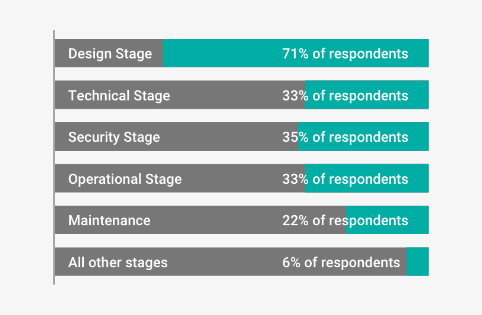What Is Technical Debt?

With technical debt, developers will constantly need to fix issues or create workarounds.
Technical debt is a metaphor used in software development to describe the cumulative cost and consequences of choosing expedient, suboptimal solutions during the software development process. Just as financial debt accrues interest over time, technical debt accumulates because of hasty coding decisions, shortcuts, and compromises that developers make to meet project deadlines or address immediate needs. These shortcuts often involve bypassing best practices, neglecting code refactoring, or postponing necessary updates, which can lead to a variety of problems down the road.
The most significant impact of technical debt is on the long-term maintainability and quality of software. When developers take shortcuts to deliver features quickly, they may introduce code that is hard to understand, error-prone, or inefficient. This can result in increased maintenance efforts, since developers will constantly need to fix issues or create work-arounds. Over time, this can slow down development, increase the likelihood of bugs, and make it challenging to add new features or scale the software.
Technical debt can manifest in various forms, such as outdated libraries, undocumented code, poorly designed architecture, and accumulated bugs. Developers need to allocate time and resources to refactor code, improve documentation, update dependencies, and eliminate known issues. By actively managing and paying down technical debt, development teams can ensure that their software remains adaptable, reliable, and cost-effective over the long term. Failure to do so can eventually cause the cost of maintaining the software to outweigh its benefits, potentially jeopardizing the project’s viability.
Consequences of Technical Debt in Embedded Projects

A well-managed embedded software development project decreases technical debt and increases customer satisfaction and ROI.
The consequences of accumulating technical debt in the embedded software industry can be particularly severe, given the challenges and constraints of this field. Embedded software is prevalent in a wide range of critical applications, from medical devices to automotive systems and industrial machinery.
Significant consequences that can result from the accumulation of technical debt in embedded software include:
- System instability: Accumulated shortcuts, suboptimal coding practices, and unresolved issues can lead to unexpected crashes, freezes, or erratic behavior of the embedded system. When reliability is paramount, as in medical devices or automotive control systems, system instability can pose serious risks to human safety.
- Performance degradation: Technical debt often leads to performance bottlenecks. Embedded systems frequently have stringent performance requirements, and inefficient code or poorly designed algorithms can result in sluggish response times or failure to meet real-time constraints.
- Increased maintenance costs: As technical debt accumulates, maintenance becomes increasingly expensive and challenging. Developers spend more time addressing bugs, working around legacy code, and retrofitting new features into outdated architectures — and less time on innovation and feature development.
- Reduced adaptability: Embedded systems are expected to evolve over time to accommodate changing requirements and emerging technologies. Technical debt makes it difficult to integrate new hardware components, upgrade software libraries, or implement modern development practices. These embedded systems can become noncompetitive or even obsolete.
- Security vulnerabilities: Outdated or unpatched software components and poor security practices render embedded systems vulnerable to cyberattack, and the effects can include breaches or even physical harm.
- Longer time-to-market: Delays in testing, debugging, and resolving issues associated with technical debt can hinder product releases, potentially causing a loss of market opportunities and revenue.
- Customer dissatisfaction: Compromises in system stability, performance, or security can harm a company’s reputation, erode customer trust, and result in lost business.
Ultimately, a well-managed embedded software development lifecycle leads to customer satisfaction and ROI by ensuring that the final product meets or exceeds expectations in terms of reliability, performance, and functionality.
How to Avoid Technical Debt

Stages of development with the lowest tolerance for technical debt, according to a 2022 Wind River survey of embedded Linux practitioners.
A holistic approach encompasses a variety of best practices and principles:
- Planning and design: Meticulous planning and design account for a system’s unique constraints and requirements. Establishing clear coding standards and design guidelines ensures that code quality and maintainability are top priorities right from the project’s inception.
- Regular code reviews: Experienced developers should scrutinize code changes and align with coding standards and best practices. As part of this process, knowledge sharing and mentorship within the development team further contribute to maintaining high code quality.
- Automated testing: A comprehensive testing strategy includes unit tests, integration tests, and system tests. Automation, through continuous integration and continuous delivery pipelines, helps catch defects early in the development process.
- Refactoring: As an ongoing practice, refactoring addresses emerging technical debt. It involves systematically improving code structure, readability, and performance. Updating documentation aids in understanding and troubleshooting, and it should include architecture diagrams, API documentation, and meaningful comments within the code.
- Managing dependencies: Teams need to keep track of third-party libraries and dependencies, updating them regularly to incorporate security patches and performance enhancements while maintaining backward compatibility.
- Security best practices: Assessments, secure coding guidelines, and vigilance against potential vulnerabilities should be integrated into development.
- Resource optimization: Developers must be mindful of memory, CPU, and power constraints. Profiling the code can help identify and address performance bottlenecks. Planning for long-term support ensures that the software will remain maintainable throughout the product’s lifecycle.
- Ongoing education and training: Development teams must remain current with embedded technology trends and best practices. Regular risk assessments help identify high-risk areas. Agile development methods foster transparency, collaboration, and adaptability.
By adopting these principles and practices, development teams can ensure the longevity, reliability, and adaptability of embedded systems while mitigating the long-term costs associated with technical debt.
Drawbacks of Technical Debt in Linux

Embedded Linux projects face strict constraints and often have long lifecycles, so efficient code is vital.
Embedded Linux powers a wide range of devices, from IoT sensors to automotive infotainment systems, and its prevalence continues to grow. Here are a few reasons why calculating technical debt is vital in the context of embedded Linux:
- Resource constraints: Embedded systems typically operate under limited CPU power, memory, storage, and other strict constraints. Inefficient code or bloated dependencies quickly deplete these resources and cause poor performance or system failure.
- Long lifecycles: Embedded system lifecycles can span decades, especially in industries such as aerospace or automotive. By calculating and addressing technical debt early in the development process, teams can ensure the long-term reliability and viability of their deployments.
- Security concerns: Organizations that stay on top of technical debt can identify and remediate security-related issues before they become critical, reducing the risk of security breaches.
- Maintainability: Embedded Linux software development team members often have varying levels of expertise, and knowledge transfer is essential. Calculating technical debt helps teams identify areas where code refactoring, documentation improvements, or better development practices are needed.
- Competitive advantage: Rapid development and innovation are market necessities. By addressing technical debt, organizations can maintain agile and adaptable embedded Linux systems and keep their competitive edge.
By adopting these principles and practices, development teams can ensure the longevity, reliability, and adaptability of embedded systems while mitigating the long-term costs associated with technical debt.
How Can Wind River Help?
Wind River Linux Technical Debt Calculator

Wind River offers a technical debt calculator and Studio Linux Services to help teams rein in technical debt.
The Wind River® Embedded Linux Technical Debt Calculator is a software tool that quantifies and assesses the level of technical debt present in embedded systems and software projects. It provides a structured approach to measuring the hidden costs associated with suboptimal coding practices, architectural deficiencies, and other forms of accumulated technical debt. Development teams use it to gain insights into areas that need attention and improvement, allowing them to make informed decisions about resource allocation, prioritize areas for code refactoring, and develop strategies to mitigate technical debt.
Wind River Studio Linux Services: Lifecycle Security
Wind River Studio Linux Services Lifecycle Security is a comprehensive solution tailored for embedded Linux systems, addressing security throughout the entire product lifetime. This service starts at initial design and continues through development to deployment and ongoing maintenance. It offers proactive security measures such as vulnerability scanning, threat analysis, and risk assessment. And with security patches, updates, and continuous monitoring, Studio Linux Services ensure that embedded Linux systems remain resilient to evolving threats throughout the operational lifecycle.